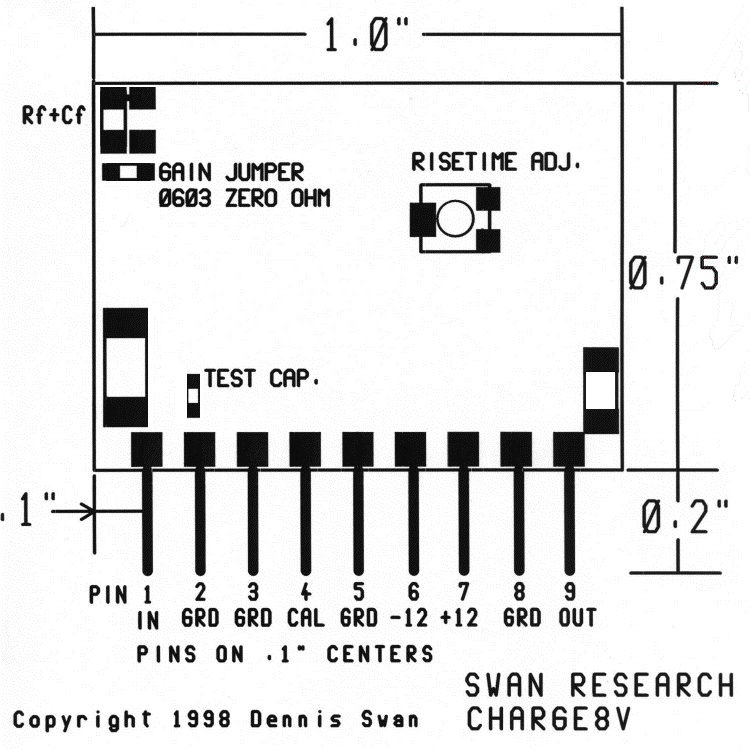
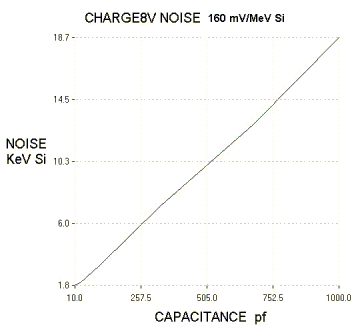


The CHARGE8V is a general purpose charge integrating preamplifier (JFET
input RC charge reset type with
bipolar output) suitable for use in a wide range of applications.
Some uses include:
Solid state radiation detectors - (including position sensitive)
such as Si surface barrier, PIN photo diode, Si
strip, GeLi, CdZnTe, etc.
Gas filled radiation detectors - (including position sensitive) such
as Ion chambers, proportional counters,
Time projection chambers, Bragg curve detectors, low pressure proportional
counters, MWPC, PPAC, etc.
Scintillation radiation detectors - Photo multiplier, and PIN photo diode readout.
Instrument applications - readout of dynode and microchannel electron
multipliers, channeltrons, or other
applications when the output is a charge pulse and low noise is necessary.
Specifications
Sensitivities - of 160 mV/MeV Si (3.6 mV/fc) to very low values are possible.
Output impedance - 50 Ohm
Output range - greater than +-8 V into 1k Ohm, greater than +-3 V into 50 Ohm
Rise time - with sensitivity set at 160 mV/MeV Si, Rt ~15
ns with 0 pf In. C, ~60 ns with 100 pf In. C.
with sensitivity set at 5 mV/MeV Si, Rt ~10 ns with 0 pf In.
C, ~30 ns with 100 pf In. C.
Power dissipation - ~300 mW, ~ 15 mA @ +12 Volt, ~10 mA @ -12 Volt
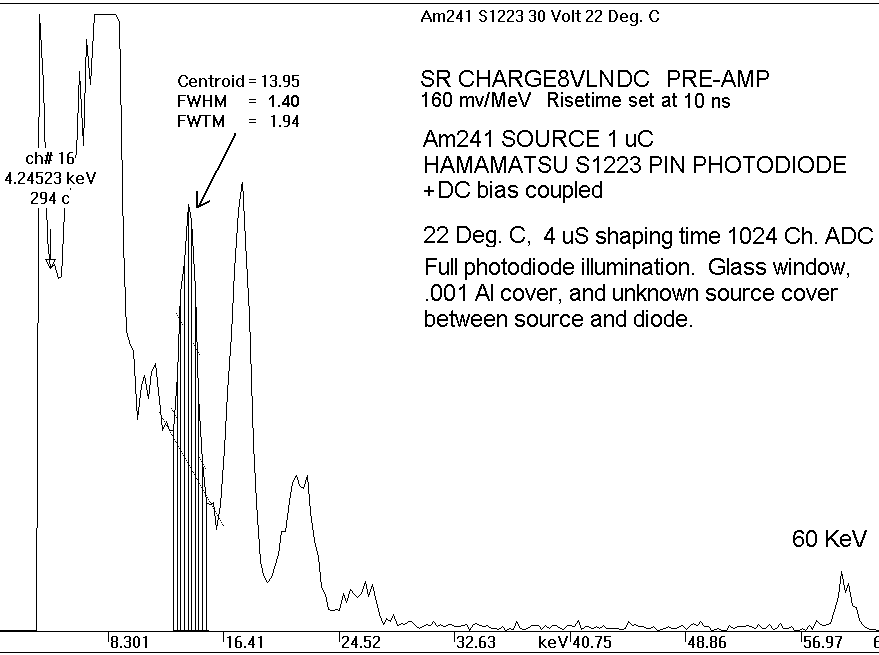
Note the noise width in the Am241 X-ray spectrum above. This
is with the preamp risetime set at 10 ns and the input J-FET protection
diode removed using the circuit below labled "DC Coupling Application".
This shows that the pre-amp noise is lower at 10 pf than the pulser data
indicates in the graph above. The FWHM value is worst case (FWHM
+ Error).
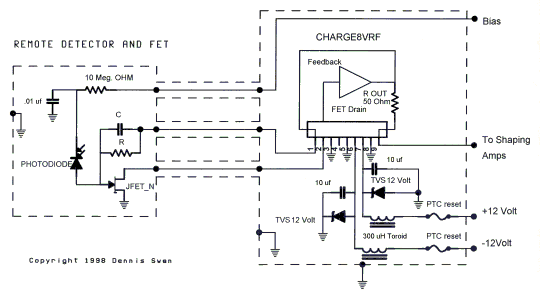
Remote FET Application
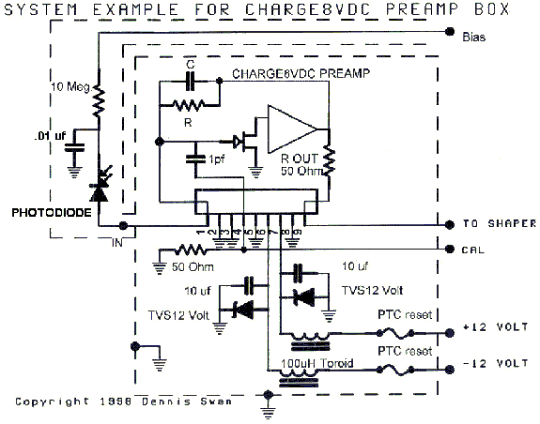
DC Coupling Application
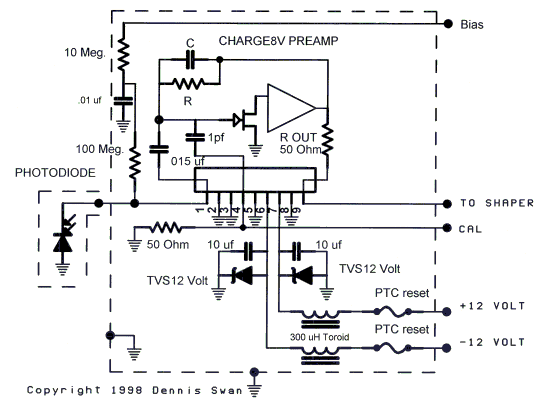
AC COUPLING APPLICATION
Note: The best power supply voltage and polarity protection is
achieved using transient voltage supression shunt
diodes with a polyswitch resetting type fuse. This results in
the lowest possible voltage drop. Common mode noise filters should
be placed upstream if they are necessary.